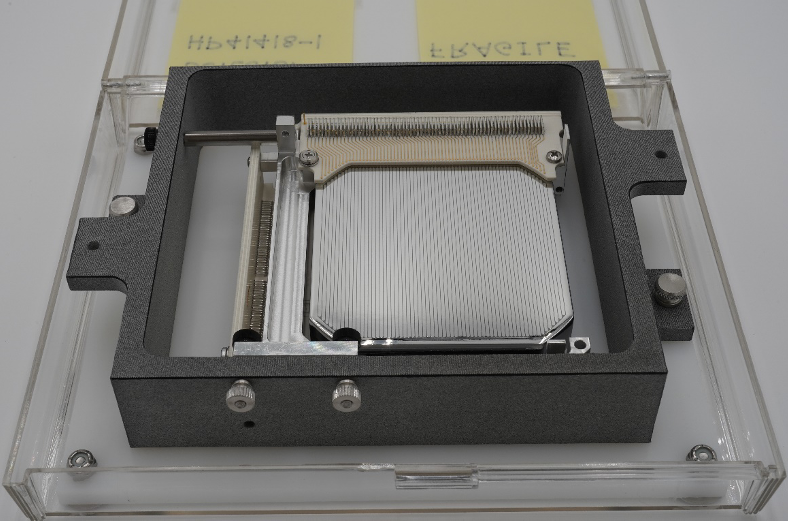Amongst the technologies pioneered at the SDL are double-sided high-purity germanium (HPGe) strip detectors with amorphous germanium (a-Ge) contacts [1] (Fig. 1). These devices find application in a range of areas including basic science, nuclear security, medical imaging, and gamma-ray astronomy. Using this technology, SDL researchers have designed, developed, and built detectors for multiple instruments for astrophysics projects led by the Space Sciences Laboratory at UC Berkeley [2]. These include the Compton Spectrometer and Imager (COSI) [3-6] and the Gamma-Ray Imager/ Polarimeter for Solar Flares (GRIPS) [7-9], which were successfully flown on balloon missions for NASA.
Currently, the SDL is abuzz with activity as researchers work on the next iteration of the COSI instrument [10]. Fig. 2 shows a diagram of this instrument. This gamma-ray telescope is scheduled for launch in 2025 and will be flown on a spacecraft in low Earth orbit for at least two years. An artist’s rendering of the spacecraft is shown in Fig. 3. The primary objective of the COSI instrument is to explore where the production of heavy elements in the Milky Way occurs. It will also map the distribution of positron-electron annihilations, providing valuable insights into the distribution of antimatter. At the heart of this exciting mission to improve our understanding of our galaxy, and at the heart of the instrument, lie SDL detectors.
Figure 2: Rendering of COSI instrument design. The instrument consists of 16 HPGe detectors, each 8 x 8 x 1.5 cm3. Surrounding the detector is a scintillator anti-coincidence shield that is 46 x 46 x 20 cm3. Each detector has a separate power connection and an ASIC for readout. Figure from [11].

Figure 3: Artist’s rendering of the COSI-SMEX satellite. Image by Jim Willis, courtesy of Northrop Grumman Corporation ½ Space Systems. Background Image courtesy of European Southern Observatory. Overall concept: COSI team.
[1] M. Amman et al., Nucl. Instr. Meth. A 579, 886 (2007)
[2] Space Sciences Laboratory
[3] M.S. Bandstra et al., Astrophys. Journal 738, 1 (2011)
[4] A. Lowell et al., SPIE 8443, 84434U-1 (2012)
[5] C.A. Kierans et al., SPIE 9144, 91443M-1 (2014)
[6] A. Lowell et al., SPIE 9915, 99152H-1 (2016)
[7] A. Shih et al., SPIE 8443, 84434H-1 (2012)
[8] N. Duncan et al., SPIE 8862, 88620W-1 (2013)
[9] N. Duncan et al., SPIE 9905, 99052Q-1 (2016)
[10] J.A. Tomsick et al., arXiv 1908.04334 (2019)
[11] https://cosi.ssl.berkeley.edu/instrument/design/
